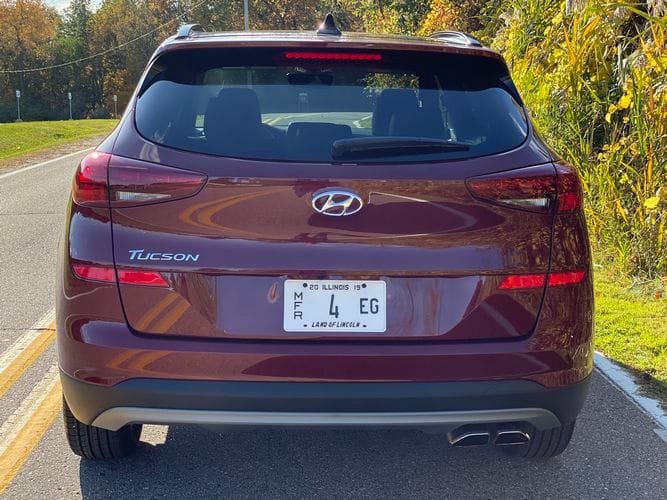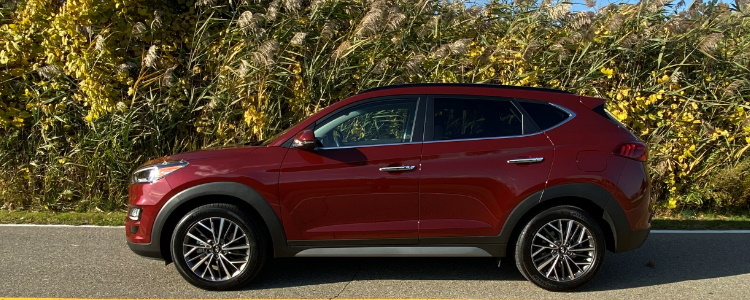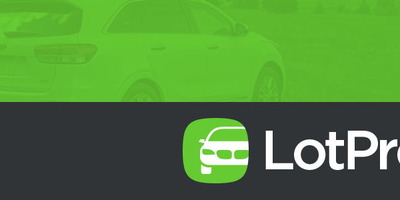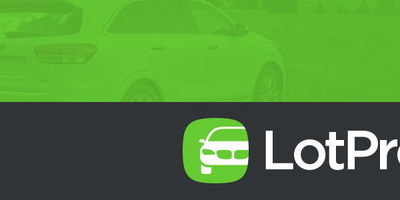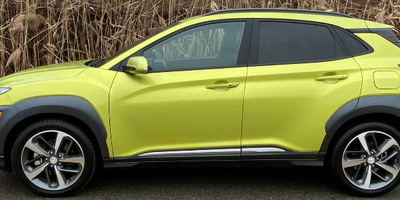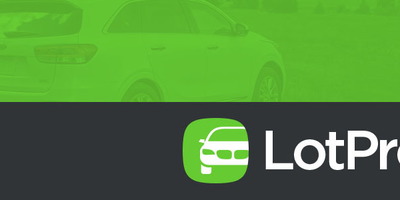Pros:
Outstanding warranty coverage
Wide selection of trim levels
Compelling value proposition
Standard active safety
Cons:
Middling performance
Dull steering
Mediocre fuel economy
Widest safety tech only on Limited
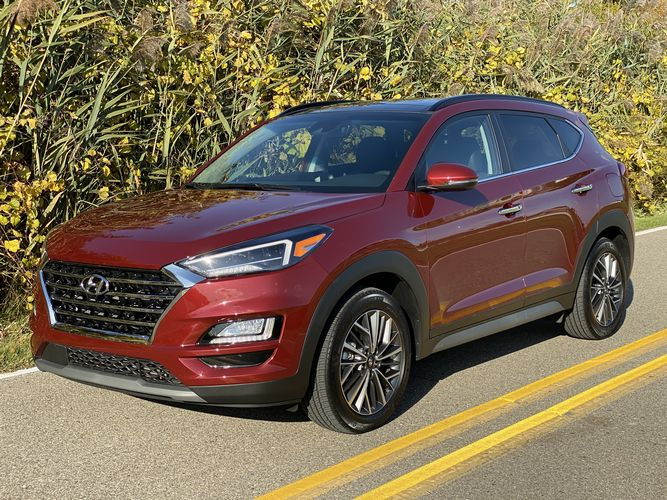
2019 Hyundai Tucson
Four years into its current model cycle, the 2019 Hyundai Tucson receives a mild refresh inside and out. There’s also a new engine that offers more power at the expense of low-end grunt, while the less-than-impressive 7-speed DCT has also been eighty-sixed. Inside, the dashboard has been re-worked, while advanced safety features are more broadly available.

Exterior
The changes to the Tucson’s exterior begin up front. Last year’s 3-bar grille gives way to a new version with four narrower bars set atop black V-shaped latticework. The lower air intake is now set flush to the bumper and features a checked design. The fog lights are taller and narrower, the LED signature lighting shifts from the top to the bottom of the fog light enclosures, and the LED headlight signatures have also been changed – tracing the top and outboard edges of the headlights rather than just the tops of the enclosures.
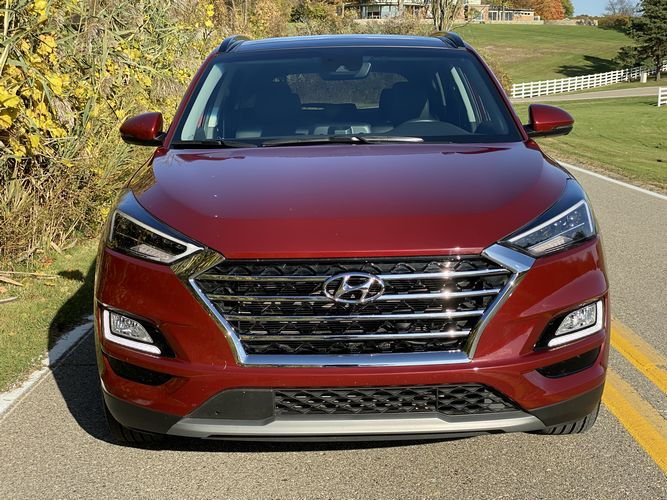
The sheetmetal along the sides is unchanged, with a sharp upper character line, and deep sculpting along the lower door panels, while all trim levels receive new alloy wheel designs. In back, both the upper spoiler and rear window remain the same. The cut line for the rear hatch, however, has been dropped to just above the license plate surround, while the rear reflectors have been moved from the lower bumper to just below the hatch cut line. The taillights now feature more of a teardrop shape, while lower rear valance has also been re-worked with an emphasis on a flat black, rather than flat gray, look.
All in all, the Tucson retains its handsome - if somewhat innocuous - design.
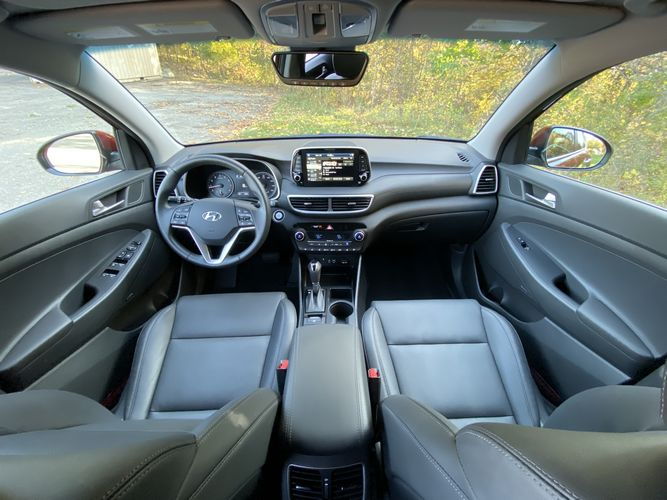
Interior
Ease into the stunning interior, and you’ll note that the various panels – most of them soft-touch - fit together with a precision typically found in luxury marques. This is also where Hyundai has made the biggest changes. Although the dashboard’s lower tier is unchanged, the single upper tier has been replaced by a dual setup. Where last year the display screen was set flush in the dash between a pair of air outlets, the new 8-inch touchscreen now sits upright on the middle tier and extends above the upper dash, enabling designers to lower the top of the dashboard for a more open feeling. The central part of the middle dash now houses a pair of air outlets, while the air outlets on the outboard edges have been re-designed.
Aside from the dash, little else has changed, meaning front seat occupants have plenty of leg, hip and headroom, while soft, leather-covered seats offer the right amount of side bolstering for all-day driving comfort. The instrumentation is easy to read, the various knobs and buttons - backlit at night – are within easy reach of the driver, while the simple infotainment interface is intuitive and simple to use - a welcome respite from the overly-complicated offerings of many rivals. The massive sunroof on our Limited brightened up the cabin, and driver sightlines were good out the front and sides. But you pay a price for the plunging roofline as visibility out the rear three-quarters is hindered by the massive C-pillar, despite the fact that it contains a small window.
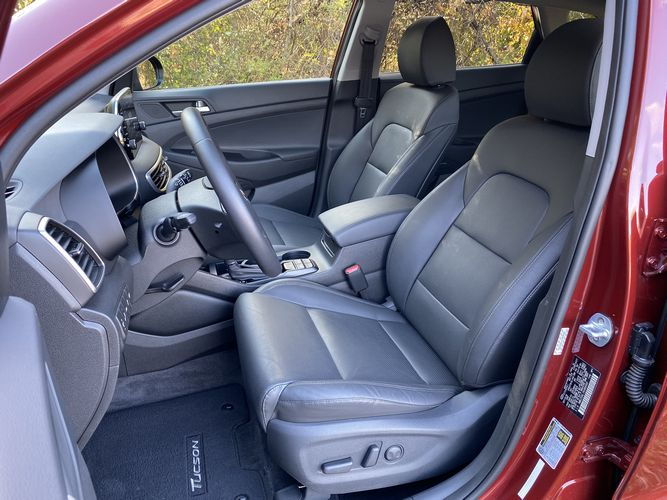
With 38.2 inches of leg room in back, two adults should be very comfortable – although three would surely be a squeeze on longer trips. In addition to the outboard bum heaters, back seat passengers in Limited models also enjoy rear air conditioning vents and USB ports, while a pair of wide rear doors allow for easy ingress and egress.
At the same time, both the Honda CR-V and Toyota RAV4 have more total interior space and, although the Tucson’s 61.9 cubic feet of space with the rear seats down is competitive, cargo volume behind the second row - just 31.0 cubic feet – falls short of the RAV4 (37.6 cu ft) and Honda CR-V (39.2 cu ft).
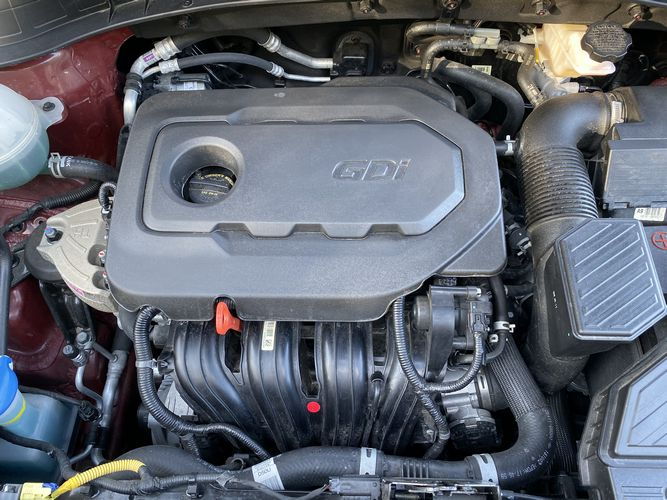
Under the hood
The base SE trim along with the Value model carry over with the 2.0-liter, direct injection 4-cylinder with 164 horsepower and 151 lb-ft of torque, matched with a 6-speed automatic transmission.
For 2019, Hyundai has dropped the turbocharged 175 horsepower 1.6-liter 4-cylinder engine along with the 7-speed dual clutch transmission. The remainder of the lineup –SEL, Sport, Night, Limited, and Ultimate trims – are now equipped with a normally-aspirated 2.4-liter 4-cylinder engine. Horsepower, at 181, is up by 6 over the outgoing engine. However, torque, at 175 lb-ft, is down by 20, with peak torque at 4,000 rpm, where the turbo’s flatter maximum torque began at just 1,500, and extended up to 4,500 rpm.
For front-wheel-drive models like the one we tested, fuel economy is decent, but hardly exceptional, scoring an EPA-estimated 22 miles per gallon city, 28 on the highway, and 25 combined, while our own observed, vehicle-measured fuel economy was 22.1 miles per gallon in suburban driving.
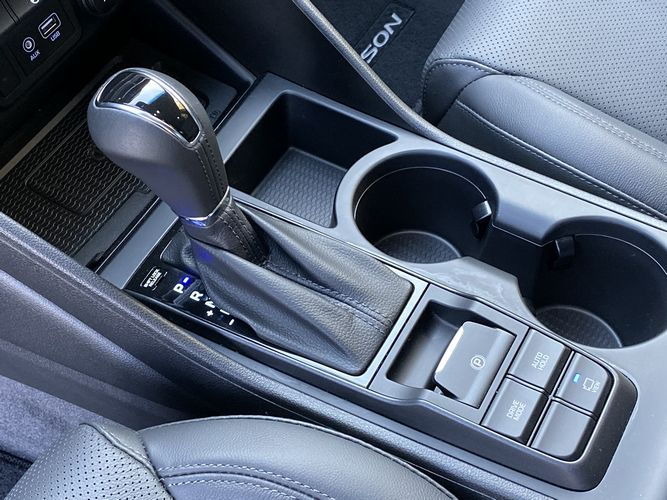
On the road
With families in mind, like most compact crossovers the Tucson’s ride is tuned for comfort over handling. The word here is competent, and that’s fine with us, thank you very much. The Tucson's suspension does a nice job of soaking up all manner of road imperfections from pavement strips to the omnipresent potholes found on Michigan’s roads. In fact, in our experience it’s one of the smoothest-riding crossovers in the class.
On freeways, very little in the way of wind, road or engine noise makes its way into the cabin. Power from the engine is sufficient to both merge into traffic and pass other vehicles with confidence, and, although we never detected much of an initial bite to the pads, the brakes felt solid, they were easy to modulate, and feedback to the driver through the brake pedal was very good.
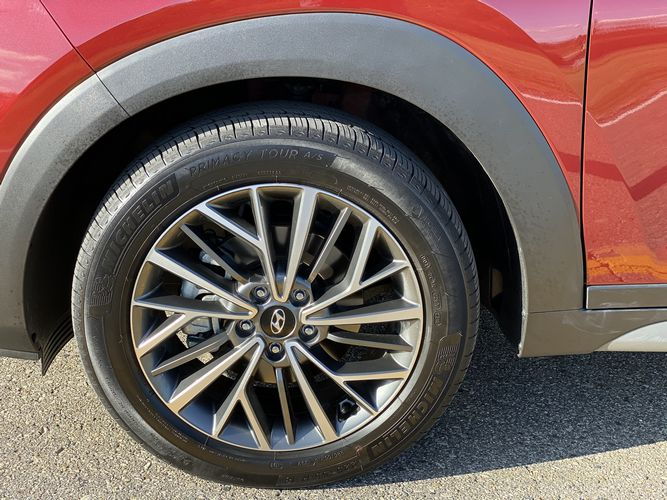
At the same time, the Tucson’s mild suspension tuning translates into noticeable body lean in corners, while the steering, although nicely weighted, is numb – with little of what is happening under the tires telegraphed to the driver through the steering wheel. Finally, the bigger engine, which is also found on a number of Hyundai’s sedans, lacks the off-the-line punch of last year’s turbo – the bottom line here being that Hyundai’s latest compact crossover lacks the punchy, fun-to-drive character of the previous version.
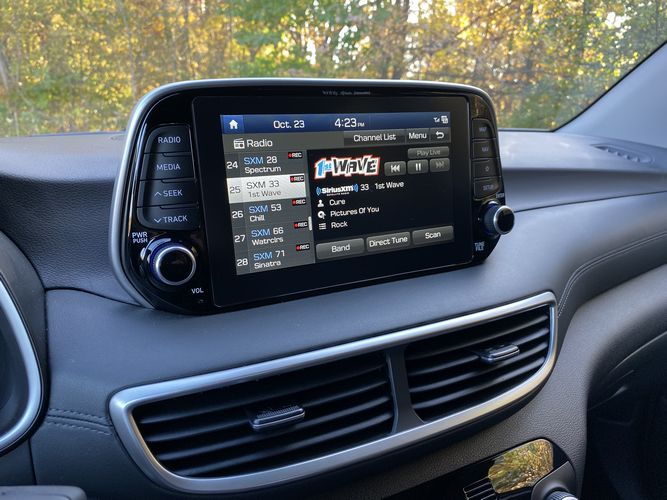
Equipment
Even base SE trims offer the typical power bits (windows, locks mirrors), along with a lengthy list of standard features including 17-inch alloy wheels, air conditioning, automatic projector headlights, heated outside mirrors, rear spoiler and intermittent window wiper, keyless entry, tilt and telescoping steering wheel, rear privacy glass, steering wheel-mounted audio, cruise, and Bluetooth controls, front USB port, and a 7-inch color infotainment touchscreen with Apple CarPlay and Android Auto capability.
Standard advanced safety systems include pre-collision warning, automatic emergency braking, lane keep assist, driver attention warning, and dynamic guidelines for the requisite rearview camera.
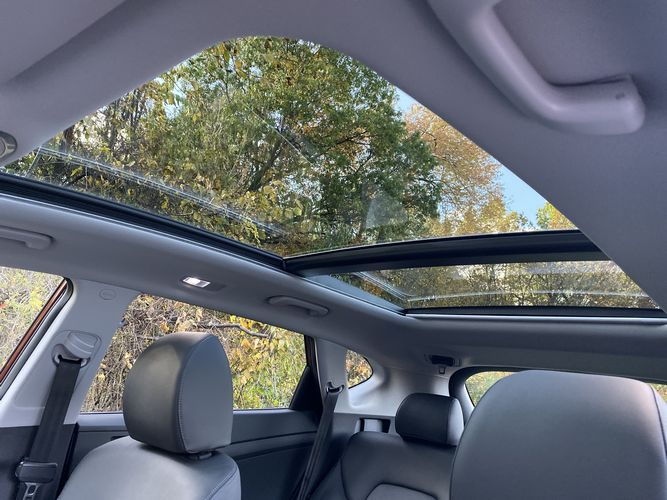
Ultimate models like our tester add to that list with 18-inch alloy wheels, LED headlights with high-beam assist, LED taillights and daytime running lights, a panoramic sunroof, 4.3-inch color multi-information instrument display, dual automatic climate control, leather-wrapped shift knob and steering wheel (heated), heated front and outboard rear leather seats, 8-way power driver’s seat with power lumbar, wireless phone charging, keyless push-button start, auto-dimming inside rearview mirror, second-row USB charger, hands-free liftgate, 8-inch color infotainment touchscreen with navigation, Infinity audio, satellite radio, and Hyundai’s Blue Link remote start and connected services gratis for 3 years.
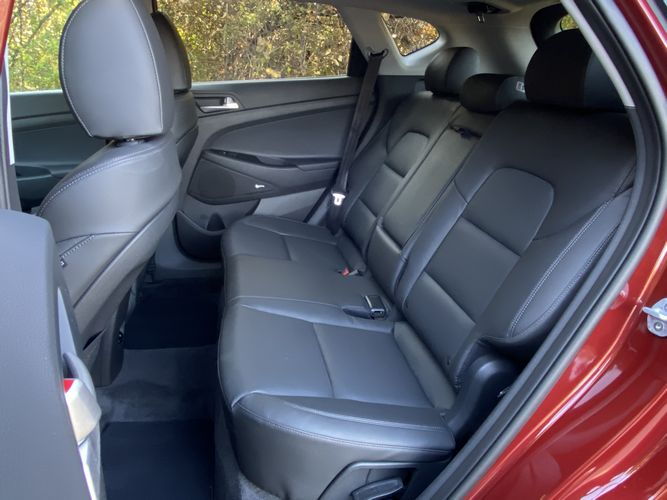
Additional advanced safety features include pre-collision warning with pedestrian detection, rain-sensing wipers, adaptive cruise control with stop & go, blind spot detection, and rear cross-traffic alert.
Last but not least, initial buyers enjoy a class-best 5-year/60,000 basic warranty and a 10-year/100,000-mile powertrain warranty, although it isn't entirely transferable to second owners (if sold within the original coverage period, second owners receive 5 years or 60,000 miles of powertrain coverage from the original delivery date).
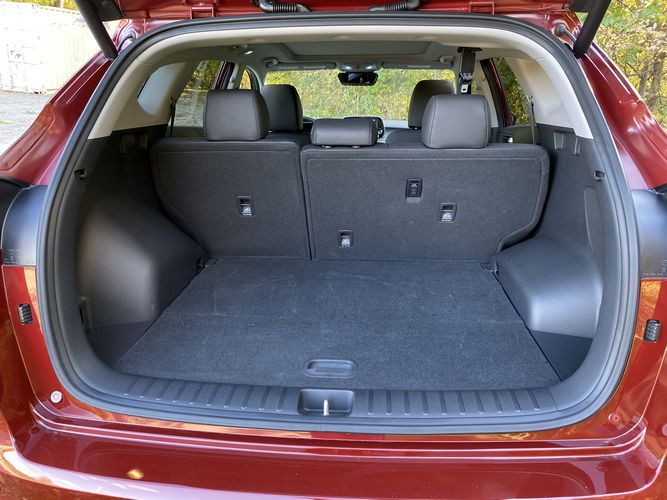
2019 Hyundai Tucson prices
2019 Tucson prices, including a $1,095 destination charge, start at $24,445 for a base SE with front-wheel-drive model and top out at $34,195 for an all-wheel-drive example in Ultimate trim.
Our FWD Ultimate tester had a base price of $31,550. $125 for floor mats plus the shipping charge brought its as-tested manufacturer’s suggested retail price to $32,720.
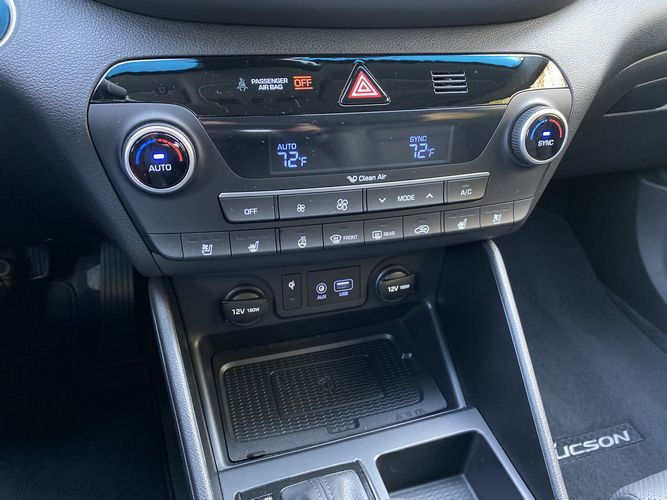
The Bottom Line
Looking at some of the Tucson’s drawbacks, buyers aiming for a more engaging driving experience should check out the Mazda CX-5, those interested in better fuel economy might want to consider the Toyota RAV4 hybrid, while the new engine, despite the increase in horsepower, is no match for the Ford Escape’s 2.0-liter turbo four.
But despite those shortcomings, 2019 Tucson Ultimate brings a lot to the table. The ride is smoother and quieter than many rivals, there’s a wide range of trim levels as well as a plethora of standard advanced safety features, while the new car warranty coverage is outstanding. As one of our top recommendations, buyers looking for a compact crossover should add the Hyundai Tucson to their lists.
